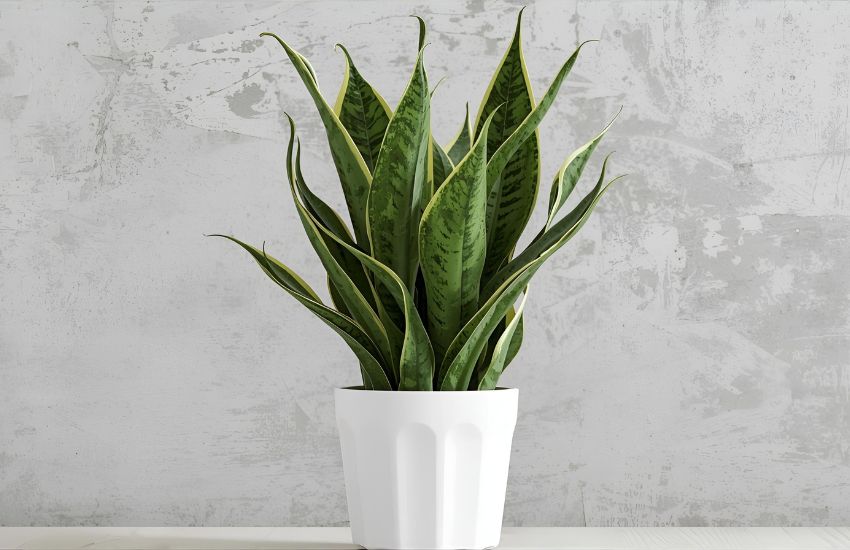You may be searching for a plant that stays reliably green, adapts to your space, and still delivers strong visual impact with minimal effort. This is where the sansevieria stands out. The timeless sansevieria trifasciata is known for its ability to thrive even when conditions are not ideal, making it one of the most dependable choices for your indoor setup. As a beginner, you benefit from a houseplant that can handle low light, occasional dry spells, and varied condition changes while keeping its bold look.
Its sturdy structure, upright form, and naturally patterned foliage trace their origins to Africa, where the plant learned to tolerate a wide range of environments. The bright yet indirect sunlight it prefers indoors helps maintain its rich tone, allowing the sansevieria trifasciata to thrive without constant supervision. With proper soil, careful watering to avoid overwatering, and a balanced fertilizer, you support steady growth and help prevent yellow edges, root issues, and pest stress.
In this guide, you will learn how to choose the right pot, select the best potting mix, understand light exposure, and manage sun levels to help your plant grow strong. You will also explore tips to keep the dark green foliage healthy, encourage compact form, prevent contrast loss in variegated types, and support your plant from spring and summer through each inch of progress.
Snake Plant – Green Care Tips for Thriving Sansevieria Trifasciata

Caring for Sansevieria trifasciata, also known as mother-in-law’s tongue, is straightforward, especially when you understand its natural habits and needs. With its sturdy structure and rich green leaves, this plant adapts easily to indoor environments and remains resilient even when exposed to a wide range of conditions. Because it is native to West Africa, it has evolved to handle heat, limited moisture, and shifting light conditions, making it perfect for beginners and those looking for truly low-maintenance houseplants.
Choosing the Right Light
Your snake plant responds well to different forms of natural light, but it performs best in bright light that is filtered or indirect. It can adapt to dimmer corners, yet balanced brightness supports richer tones, stronger growth, and more defined stripe patterns. This flexibility is what makes the plant truly low-maintenance.
Watering and Soil Essentials
Sansevieria trifasciata is naturally drought-tolerant, meaning you should allow the soil to dry between waterings. Using well-draining potting soil ensures that excess water can drain, helping you prevent root rot. When you water, always plant thoroughly, letting moisture reach the full root zone without leaving the plant sitting in water.
Temperature and Humidity
This hardy plant is comfortable in typical indoor temperature ranges and does not require special adjustments. It also handles moderate humidity levels without difficulty, making it adaptable to most home environments.
Understanding Varieties and Appearance
Some cultivars, such as the popular laurentii, feature yellow or silver edging, while others display deeper green tones. All forms remain air-purifying, helping improve indoor air quality while adding visual appeal.
Repotting for Healthy Growth
Even though it grows slowly, your plant benefits from repotting every 2–3 years. This gives the roots more room to expand and keeps the plant stable as it matures.
With the right balance of care, your snake plant—whether classic green or beautifully variegated—remains strong, attractive, and effortlessly manageable.
Conclusion
A well-cared-for Snake Plant remains one of the most reliable indoor companions you can choose. Its adaptable nature, durable texture, and clean stripe patterns make it ideal for any gardener seeking an easy-care addition to their space. By providing a well-draining setup that allows excess water to drain, protecting the plant from burn or scorch, and repotting it every 2–3 years, you support steady new growth and long-term maintenance. With consistent attention during the growing season, your Sansevieria will continue to strengthen and beautify your home.
If you’re ready to elevate your indoor plant collection, start applying these care principles today and watch your Snake Plant flourish.
Frequently Asked Questions (Snake Plant – Green: Expert Tips for Thriving Sansevieria Trifasciata Indoors)
How to care for Sansevieria snake plant indoors?
To care for a Sansevieria (snake plant) indoors, place it in bright, indirect light or low-light areas. Water sparingly, allowing soil to dry completely between waterings. Use well-draining soil and a pot with drainage holes. Avoid overwatering to prevent root rot and ensure hassle-free growth.
How can I make my snake plant thrive?
To make your snake plant thrive, place it in bright, indirect light or tolerate low light. Water sparingly, allowing soil to dry completely between watering. Use well-draining soil, avoid overwatering to prevent root rot, and fertilize lightly during spring and summer for healthy, sturdy growth.
Where is the best place to put a snake plant in your house?
The best place for a snake plant is in bright, indirect sunlight, such as near a north- or east-facing window. It also tolerates low light, making it perfect for living rooms, bedrooms, or offices. Avoid direct harsh sunlight, which can scorch leaves, and keep away from drafts.
How to make your snake plant bloom indoors?
To encourage your snake plant to bloom indoors, provide bright, indirect sunlight, avoid overwatering, and maintain warm temperatures around 70–90°F (21–32°C). Fertilize lightly during spring and summer, ensure well-draining soil, and keep the plant slightly rootbound, as stress can trigger fragrant white flowers.
